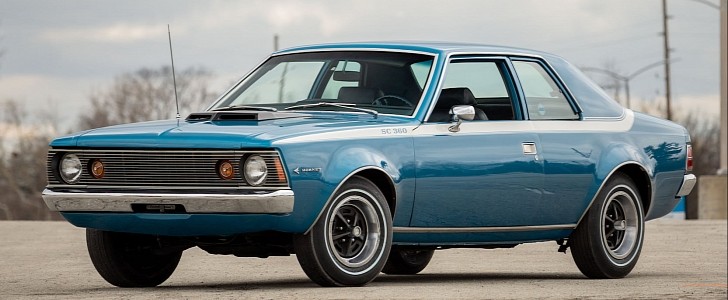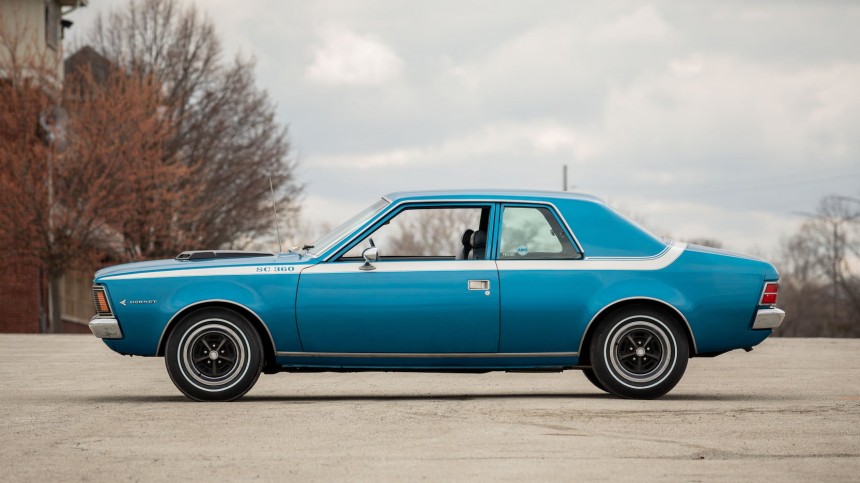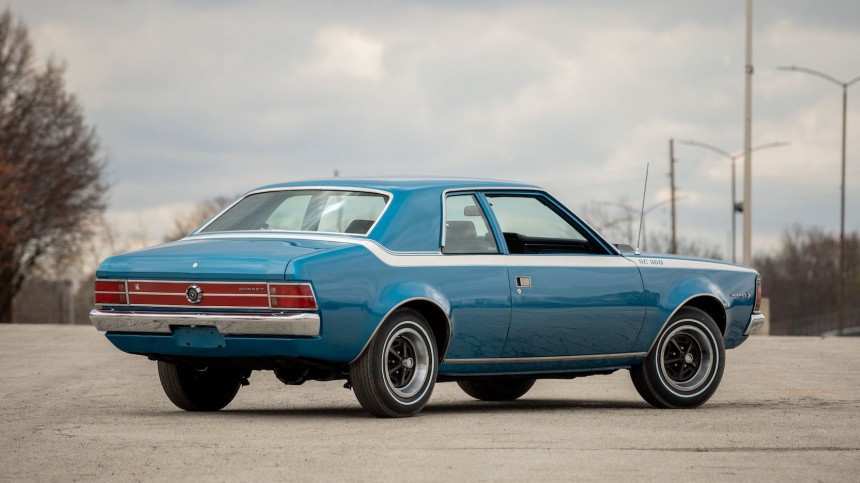American Motors never had the budget of the Big 3, and that forced them to think outside the box. By the mid 60’s, it was clear that their Rambler American lineup needed to retire. Comprised of a 2-door, 4-door, and a wagon, work began in 1967 on a revolutionary chassis that could support a car of any size. After one million man-hours and $40 million (in 1970 dollars), the Hornet arrived to rave reviews.
Riding on a 108” wheelbase (274.3cm), their smallest body shared a unibody foundation intended for much larger models. This one-size fits all suspension also allowed the AMC Eagle to offer 4WD, living through the end of the 1988 model-year. For $1,994, you could have the first American car with side impact protection along with more legroom than any other compact. With the wheels at the corners of the body, the Hornet was also more confident in the corners. This prompted Motor Trend to say “It handles like a dream.”
With sales beating everyone’s expectations, the gloves came off for 1971. If you needed excitement, the Hornet SC360 arrived with their hottest 5.9L. For $2,663, you had 245 horsepower from a 2-barrell carburetor. Unfortunately, transmission choices were limited to a 3-speed manual or a Borg-Warner 3-speed automatic.
Only the bold spent $199 more for the “Go Package”. This gave you a 4-barrell, ram-air hood scoop, and a Hurst shifted 4-speed manual. This was sent to a 3.90 “TwinGrip differential to offer blistering launches. This unlocked 285 horsepower and 390 lb-ft (528 Nm) of torque and traded the anemic single exhaust to a true dual system.
Aside from the big power, the appeal of the Hornet SC360 was that it flies under the radar. Hot Rod magazine noted that insurance companies didn’t consider it in the same class as a Camaro or Mustang, so it avoided the 25% high-performance surcharge. This could add up to $100 annually, a small fortune in 1971. This was in keeping with AMC/Rambler’s history of big performance in an understated wrapper.
In showroom-stock form, the automatic cars offered consistent quarter-mile times in the high 14’s. This was the beginning of the end for muscle car performance, and the EPA was already stepping on their toes. Under 30 mph, the distributor’s vacuum advance was locked out in a vain attempt to lower pollution in the city. Adding insult to injury, the 4-speed cars were burdened with a smog pump along with the weight of its attached hardware.
Thankfully, your local AMC dealer would be happy to sell you the performance parts necessary to circumvent these strangleholds. After a few minutes tuning the ignition and the carburetor, you would have a 13-second car. Car Craft magazine added headers, drag tires, and traction bars to run 13.78 @ 101.9 mph.
What owners also discovered is the car’s ability to entertain in the corners. These are full-size tires on a tiny car, and thanks to the formidable suspension the Hornet doesn’t roll much when being pushed. Because it outperformed everyone’s expectations, the media accidentally caused the problem AMC had been trying to avoid. Insurance companies slapped the Hornet with the same premiums as cars twice its price. After tooling up in anticipation of 10,000 cars annually, only 784 were built. Of those, only 304 had the Go Pack.
With the looks and performance of a super stock dragster, many of these were irreversibly transformed into quarter-mile machines. The other sad aspect is that older AMCs had no intrinsic value up until a few years ago. Detroit might have been more popular, but Kenosha will always be remembered for timeless machines like these. Stay with us for more insights like these here at autoevolution!
With sales beating everyone’s expectations, the gloves came off for 1971. If you needed excitement, the Hornet SC360 arrived with their hottest 5.9L. For $2,663, you had 245 horsepower from a 2-barrell carburetor. Unfortunately, transmission choices were limited to a 3-speed manual or a Borg-Warner 3-speed automatic.
Aside from the big power, the appeal of the Hornet SC360 was that it flies under the radar. Hot Rod magazine noted that insurance companies didn’t consider it in the same class as a Camaro or Mustang, so it avoided the 25% high-performance surcharge. This could add up to $100 annually, a small fortune in 1971. This was in keeping with AMC/Rambler’s history of big performance in an understated wrapper.
In showroom-stock form, the automatic cars offered consistent quarter-mile times in the high 14’s. This was the beginning of the end for muscle car performance, and the EPA was already stepping on their toes. Under 30 mph, the distributor’s vacuum advance was locked out in a vain attempt to lower pollution in the city. Adding insult to injury, the 4-speed cars were burdened with a smog pump along with the weight of its attached hardware.
What owners also discovered is the car’s ability to entertain in the corners. These are full-size tires on a tiny car, and thanks to the formidable suspension the Hornet doesn’t roll much when being pushed. Because it outperformed everyone’s expectations, the media accidentally caused the problem AMC had been trying to avoid. Insurance companies slapped the Hornet with the same premiums as cars twice its price. After tooling up in anticipation of 10,000 cars annually, only 784 were built. Of those, only 304 had the Go Pack.
With the looks and performance of a super stock dragster, many of these were irreversibly transformed into quarter-mile machines. The other sad aspect is that older AMCs had no intrinsic value up until a few years ago. Detroit might have been more popular, but Kenosha will always be remembered for timeless machines like these. Stay with us for more insights like these here at autoevolution!









